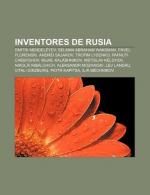|
This section contains 333 words (approx. 2 pages at 300 words per page) |
World of Scientific Discovery on Selman Abraham Waksman
Waksman focused his research on the study of agents that kill microorganisms. He coined the term " antibiotic" and discovered streptomycin, which was the first effective treatment for tuberculosis.
Born in Priluki, Russia, Waksman emigrated to the United States after graduating from high school. He earned his graduate degree at Rutgers University and continued his studies at University of California, returning to Rutgers as a member of the faculty. Waksman specialized in the study of soil-living microorganisms. One of his students, René Jules Dubos (1901-1981), noticed that a number of antibacterial substances could be found in soil. One of these substances, gramicidin, was found to be active against pneumonia, but it was too toxic to use in humans. Dubos's work inspired Waksman to turn to the search for such antibacterial substances.
In the following decades, he found and tested dozens of antibiotics. One of them, actinomycin A, was more powerful than penicillin, but also highly toxic. Waksman had been culturing a mold of the genus Streptomyces in his laboratory for years and in 1943, he isolated a chemical from it which destroyed gram-negative bacteria, a type of bacteria even the newly discovered penicillin could not kill.
Streptomycin, as he called the chemical, was being tested on humans by 1945. The tests were successful in treating bacterial meningitis and in destroying the tubercle bacillus--the cause of tuberculosis and the most difficult to treat of all infectious diseases. The initial tests of streptomycin were so promising that within three years, the drug was being mass-produced for extensive clinical trials directed at various forms of tuberculosis. Once again, the drug worked wonders. By 1950, streptomycin had been proven effective against seventy microorganisms that did not respond to penicillin and was one of the most important drugs available to physicians in the battle against bacterial infections. Further research on microorganisms in soil led to the discovery of yet another group of powerful antibiotics, the tetracyclines. Waksman was awarded the 1952 Nobel Prize in medicine and physiology for his work.
|
This section contains 333 words (approx. 2 pages at 300 words per page) |


